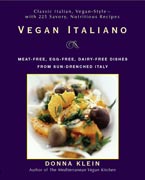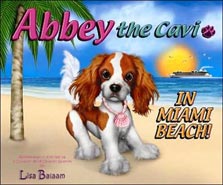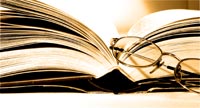 VEGAN ITALIANO VEGAN ITALIANO
by Donna Klein
 ABBEY THE CAVI IN MIAMI BEACH ABBEY THE CAVI IN MIAMI BEACH
by Lisa Baisam
  WORLD TOURISM ORGANIZATION WORLD TOURISM ORGANIZATION
CELEBRATES 2006
Publications can be found at www.unwto.org.
A SLICE OF NOSTALGIA FROM VINTAGE COOKBOOKS
 Husband-and-wife entrepreneurs Peter Peckham and Eddie Edwards shared a passion for collecting nostalgic cookbooks. They transformed their hobby into OldCookbooks.com, an online store where collectors, chefs, foodies and sentimental consumers alike can find out-of-print, vintage and Husband-and-wife entrepreneurs Peter Peckham and Eddie Edwards shared a passion for collecting nostalgic cookbooks. They transformed their hobby into OldCookbooks.com, an online store where collectors, chefs, foodies and sentimental consumers alike can find out-of-print, vintage and
rare cookbooks depicting a simpler time.
Name a subject related to food and drink, and likely a cookbook has been written about it. From all-purpose titles where readers can learn to prepare everything from apple pie to zucchini dishes - to more specialized editions that explore the world of cooking with coffee, wine, seafood and chicken – the selection of cookbooks is dizzying. Today, an array of titles by Rachael Ray, Paula Deen, Wolfgang Puck, Emeril Lagasse and a multitude of other celebrity chefs dominate the bookstore shelves. Yet it’s the vintage cookbooks – those pieces of nostalgia created in the early and mid-1900s – that have stood the test of time and are creating a stir among collectors, foodies and people who have fond memories of beloved recipes once shared with their mothers and grandmothers.
Eddie Edwards and her husband, Peter Peckham, recognized this trend and started a business that serves as an online clearinghouse of vintage cookbooks for those searching to replace a treasured family heirloom and cooks longing to discover recipes from the past. Since debuting in 2004, OldCookbooks.com has grown to one of the Internet’s most expansive resources for out-of-print, vintage and rare cookbooks ranging from the late 1800’s to the present. The site features an extensive library of keepsakes, many in their original editions. They are divided into a variety of categories – including American classics like The Joy of Cooking and the series of Betty Crocker, Fannie Farmer, Pillsbury and Good Housekeeping cookbooks; and promotional recipe booklets produced by companies like Campbell’s, Borden, Wonder Bread, Log Cabin Maple Syrup and Jell-O. There is a generous range of subjects, from the small and amusing Baker’s Coconut and Chocolate "Animal Cut-up Cakes” and Peg Bracken’s 1960’s humorous “I Hate to Cook Book" to technical masterpieces like the American edition of “Larousse Gastronomique” and “The Escoffier Cookbook.” “Vintage cookbooks provide a slice of what life was like when cooking was one of the most important things you did every day,” Edwards said. “I wish I had time to pickle and spice, make a cake every day and plan a tea party.” Devoted to locating and preserving these historical treasures,
Edwards and Peckham even help customers find specific cookbooks they don’t have. There is a cookbook for every budget, from worn editions in the $7-$10 range to near mint condition collectibles priced $100 and above. OldCookbooks.com has a library of more than 8,000 cookbooks and recipe booklets, and vintage menus. Edwards and Peckham rely on book scouts and buy large collections of cookbooks to build their inventory, often receiving hundreds of cookbooks every week. “We considered opening a bricks-and-mortar store in Reno, but that would not have the same impact as an online site that attracts customers from around the world,” Peckham said. Before the Internet, people interested in vintage cookbooks were restricted to what they could find locally and sellers were restricted to what they could sell locally. Now, we are able to reach millions of customers. Our site is easy to search and we are experts in finding the hard-to-find titles.”
Early cookbooks (sometimes called receipt books) not only contained recipes, but they often included remedies for everything from fixing leaking faucets to cures for receding hairlines, and tips for eliminating ants and cockroaches from the kitchen along with instructions on how to wash dishes and sweep the floor. “Old cookbooks are a good way to learn about history and culture,” Peckham said. “They tell a lot about what life was like when they were written.” During America’s westward expansion, cookbooks appeared with information on how to cook while crossing the prairie. Depression-era cookbooks mention tips for economical cooking. Family and community cookbooks capture the lives of their authors and the essence of the towns and states where they lived. Some of the content from these vintage cookbooks show how times have changed. The massive 1948 “Wise Encyclopedia of Cooking” contains directions for how to draw a chicken” (removing the head, feet and entrails). Despite the references to chores most Americans have no need to perform, this edition remains a popular favorite for its thoroughness and style. Edwards’ inspiration for starting OldCookboooks.com derived from her mother, who didn’t enjoy cooking, but loved to read cookbooks.
“My first cookbook was a gift from my Mom when I was 11 years old. It was a Campbell’s soup cookbook. I learned that tomato soup is a great ingredient in cake,” said Edwards, who has a degree in industrial design, is a graphic designer, and started her collection focusing on cookbooks with strong graphic design or illustrations. "I originally just loved the old graphics, but eventually I was hooked on the stories found in these old cookbooks and the advertising pamphlets which depict life and living in another time,” Edwards explained. “Like Mom, I'm actually not much of a cook, but I love to read recipes and dream of cakes and cookies and cocktails." Peckham, who has worked as a marketing executive, shares her interest in antiques and collectibles. “We found that many people have a passion and nostalgic feelings for old cookbooks,” Peckham said. “And that’s what gave us the idea to create a web site devoted to vintage cookbooks where people could relocate old recipes and find titles that have sentimental value and evoke fond memories. Our site is easy to search, but if you can’t find cookbooks you are looking for, we will help you find them.” Peckham says there are generally two types of cookbook shoppers: collectors and replacers. Collectors are as varied as the cookbooks themselves. Some collect only illustrated cookbooks, some prefer fundraiser cookbooks produced by a particular organization and others are interested in cookbooks from a specific era, company or food. Replacers are searching for a specific cookbook that may have been damaged or lost, or as a gift for wives, mothers, daughters, and sisters. One Minnesota man purchased a replacement copy of the cookbook he had purchased for his bride on their wedding day. The replacement was a gift for their 40th wedding anniversary. “He said her current copy was being held together with rubber bands and duct tape,” Peckham said. “The desire to replace a lost cookbook is often related to a childhood memory,” Edwards explained. “People have told us, ‘Mom used this cookbook to make bread pudding when I was sick,’ and ‘Mom let me pick a cake from this booklet every year for my birthday.’”
Edwards recommends that beginning collectors consider the fundraising cookbooks. “These are also known as charity cookbooks, often spiral bound and prepared by local organizations like The Grange, The Eastern Star, The Junior League and churches to raise money,” Edwards said. Recipes are contributed by the local residents. Some may have handwritten recipes, local advertisements and recipes are often signed or attributed to their contributors and reflect regional values, foods and culture. These are especially difficult to locate as they were usually printed in small quantities. Titles range from an early 1900s printing of “Ionic’s Recipe Favorites” by the Ionic Court Order of the Amaranth to the often reprinted and wildly popular Charleston Junior League cookbook, “Charleston Receipts Cookbook” printed from 1950 to 1979. “Regional specialty cookbooks are also popular,” Peckham said. “These include regional compilations divided by regions depicting the diverse cultural heritage of the United States from Cajun to Cuban.” The unprecedented “How America Cooks”, by Clementine Paddleford and “The Prudence Penny Regional Cook Book” are among the favorites in this category. There are also regionally specific delights like “Cooking Wild Game and Fish: Mississippi Style” from 1976 and the 1950s “Best Cookery in the Middle West”. A regional Florida cookbook by the author of “The Yearling”, Marjorie Kinnan Rawlings, captures old recipes of backwoods Florida, like Cooter (Florida Soft-Shell Turtle Soup) and Creamed Poke-Weed on Toast. And the 1930’s “New England Cook Book of Fine Old Yankee Recipes” is a charmer with recipes like Harwichport Potatoes, Baked Oyster Soup, and Eggs Fairlee, Edwards and Peckham plan to expand their inventory to 20,000 titles by the end of 2007. When they receive a book, they clean it, research it, price it, scan it and enter it into their database. Each title includes a photo and a description of the content and the condition.
Collectors obviously are searching for titles in very good condition while some people just want an old cookbook to prepare recipes from and actually use in the kitchen,” Peckham said. “There are some books – especially in the fundraising titles – where previous owners have written notes or taped recipes in. Many people think this adds to the character of the book, reflecting the memories created by the original owners. When you think about it, cookbooks aren’t just about recipes, they are about memories.”
|





